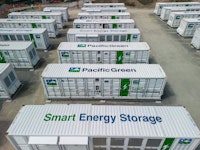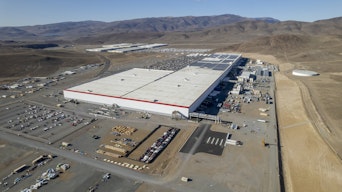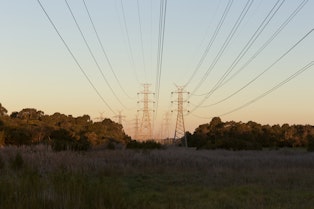Australia has plenty to be proud of, from cuddly koalas and beautiful beaches to Vegemite and Crocodile Dundee.
In the energy world, the nation’s claims to fame include leading levels of residential solar energy in South Australia and—for a while at least—the world’s biggest battery system, in the shape of the Hornsdale Power Reserve. But there could be more to come.
Australia has already set forth its ambitions for energy storage leadership in a National Battery Strategy that looks to create a world-beating value chain serving global electric vehicle markets.
“As the world moves to net zero emissions, batteries will become a bigger part of our energy mix,” says the strategy issues paper. “Batteries will power electric vehicles, residential and community scale energy storage, and grid energy storage for small and large systems.”

Australia can capture increasing parts of these growing markets, it adds, “building on our strengths in mining and range of battery minerals. Australia can offer mineral and manufacturing inputs into a wide range of battery chemistries across the value chain.”
Currently, China controls 75% of lithium refining and lithium-ion cell manufacturing capacity and its focus on all aspects of the battery value chain offers important lessons about how to achieve industry leadership.
Indeed, the analyst firm BloombergNEF sees China leading the lithium-ion battery manufacturing pack up to 2027 and beyond, followed by Canada and the US.
Australia is in the top 10 contenders for lithium-ion manufacturing, but only just—it is ranked tenth now and is expected to still be there in 2027. There is a chance that could change if Australia focuses on exploiting its world-leading lithium production capacity.
Australia currently produces more than half of all the lithium used in the world, putting it in an enviable position at the base of the lithium-ion battery value chain. The government expects lithium exports to growth threefold in the 2022-23 financial year, topping AUD$16 billion.
Further growth is expected next year, when exports will go from 399,000 to 470,000 tonnes, bringing in $17 billion. Australia also has important reserves of cobalt, vanadium, manganese and graphite, which are all key to battery production.
What the country lacks at present is refining and cell manufacturing capacity. Prime Minister Anthony Albanese is keen to change that.
“I want to make sure we use the lithium and nickel and other products that we have to make batteries here,” he said at a National Press Club meeting in February. “That's part of the vision of protecting our national economy going forward.”
This manufacturing capacity would not be impossible for Australia to develop. Plus, Australian gigafactories could be powered with abundant renewable energy, providing cheap electricity and giving Australia’s battery products a green bonus.

Under the government’s National Battery Strategy, Australia’s battery pack assembly capacity would grow more than seven times by 2035. And Australia can build battery leadership in areas other than manufacturing, too. Take research and development.
Establishments such as the Commonwealth Scientific and Industrial Research Organisation (CSIRO) are home to some of the world’s top clean energy research teams.
CSIRO has a track record in battery innovation, with researchers in the 2000s developing a unique ultracapacitor and lead-acid hybrid called the UltraBattery.
More widely in cleantech, Australian researchers from the University of New South Wales are celebrated for inventing passivated emitter and rear cell technology, which has now become a global standard in photovoltaic solar.
More recent examples of Australian cleantech innovation include Hysata’s capillary-fed electrolysis cell and AGL’s integration of thermal storage into the Torrens Island Power Station.
By any measure, Australia punches above its weight in cleantech research and development terms, although Australian innovators may face challenges with commercialisation. And beyond the innovation aspect, Australia also deserves a medal for progress on energy storage deployment.
The country passed 1 GWh of installed battery capacity in 2021, including more than 30,000 residential energy storage systems and 756 MWh of non-residential, front-of-meter projects.
That year, the US installed 10.5 GWh of battery storage—but the country has 15 times Australia’s gross domestic product. And the end of 2022 saw Australia doubling down on major battery projects.
The Hornsdale Power Reserve seems to have given Australia a taste for big battery systems, and in December 2022 the federal government unveiled eight more large-scale projects. All are due to come online by 2025 with capacities of up to 300 MW.
Three will be in Victoria and there will be two each in Queensland and South Australia. The $2.7 billion investment programme will add enough storage capacity to power the whole of Tasmania for three hours.

Australia is uniquely placed to forge ahead with such projects because the sparse nature of the country’s electricity network allows storage to deliver real value.
Unlike grid operators in Europe or North America, the National Electricity Market cannot call on neighbouring grids for a helping hand when demand outpaces supply. Electricity customers in Western Australia cannot even call on neighbouring states.
This fragility has become more apparent in recent years as extreme weather events have battered transmission lines and caused blackouts.
In February, the Australian Energy Market Operator (AEMO) warned that the grid needed to be strengthened ahead of the retirement of at least five coal stations in 2027, which will cut 13% of the National Electricity Market’s capacity.
"Urgent and ongoing investment in renewable energy, long-duration storage and transmission is needed to reliably meet demand from Australian homes and businesses," said AEMO’s chief executive, Daniel Westerman.
Every large-scale battery project that gets added to the system helps improve the stability of the grid and prevent blackouts from affecting Australian citizens.
Plus, it adds to the already vast store of battery project management knowledge being accumulated by Australian developers such as Pacific Green. Battery storage leadership can be measured not only in terms of manufacturing but also based on a range of other measures.
And Australia stands a good chance of winning in any of them.
Publish date: 26 July, 2023